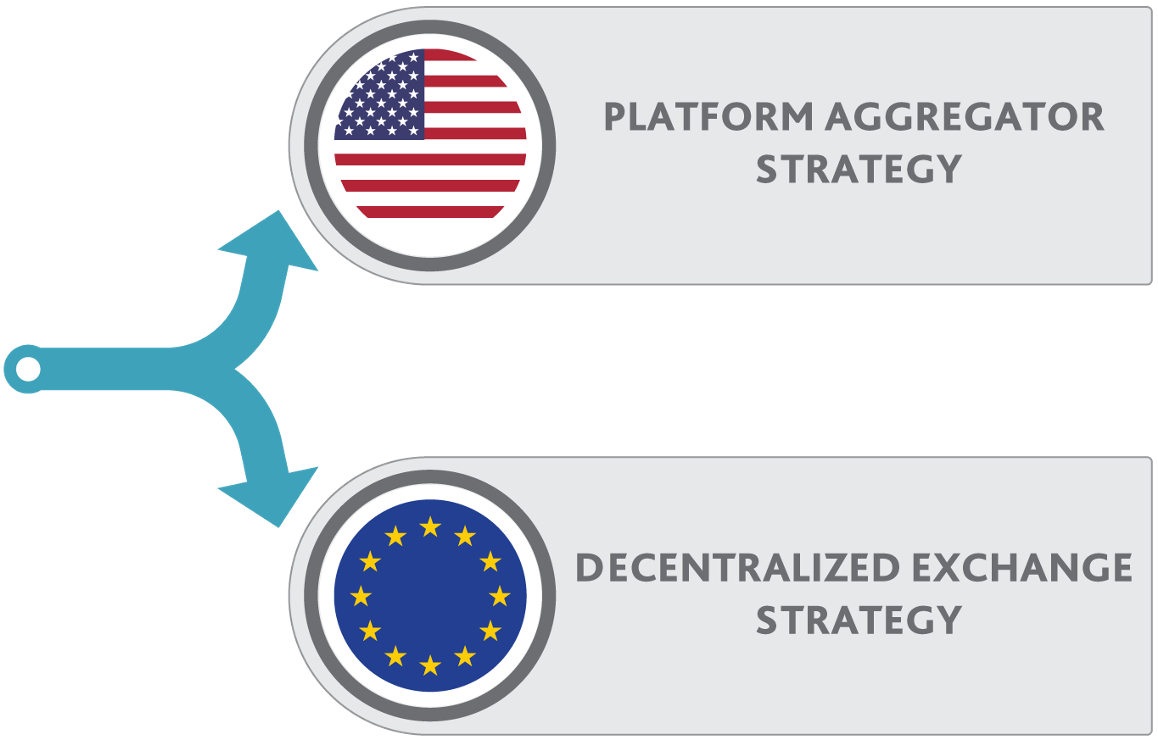Bridging the gap: European versus American data strategies
As part of my work in the field of federated data strategies, I find myself talking a lot about the impact of modern, federated data strategies and how to benefit from it. However, there is also another topic that is just as interesting and relevant. Because if you look at the way we look at digital sovereignty of specifically data, there is a cultural and commercial difference in the way we look at digital sovereignty and data in Europe versus the way this is done in the United States.
With the adoption of Cloud computing and the rise of AI in recent years, the way we manage and share data has changed. Specifically, the pivotal role of data is shaping the way we design our technological ecosystems, economic competitiveness, and societal values. While both Europe and the United States are global leaders in technology, there is a significant difference in how data strategies are approached on either side of the Atlantic. While the United States predominantly emphasizes centralized architectures and commercial optimization, Europe is forging a path toward federated architectures with a strong focus on digital sovereignty and collaborative ecosystems.

The American Approach: Centralized and Scale-Driven
In the United States, data strategies are heavily influenced by the dominance of big tech companies. Organizations such as Google, Amazon, and Microsoft have built vast centralized data infrastructures, epitomized by hyperscale cloud providers. This model thrives on:
- Centralization; Data is stored, processed, and managed in massive data centers owned by a few hyperscale cloud providers like Amazon Web Services (AWS), Microsoft Azure, and Google.
- Data as a Commodity; Using the centralized platforms, that are optimized for cost, speed, and scalability, data is seen as a resource to be monetized and aggregated for insights.
- Private Sector-Led Innovation; Innovation and not the interest of the individual or regulation dictates how data is managed and shared. And this focus on innovation to capture market share usually prioritizes convenience and speed over regulatory or ethical concerns.
- Global Scope; Businesses emphasize scalability and seamless global integration, prioritizing efficiency over regional governance concerns.
And even though more and more people are worried about the ownership of the data, the American strategy has no doubt played a dominant role in the rise of the dominating style of Cloud-based infrastructures. And the fact that these Cloud-based infrastructures are largely dominated by American hyperscale Cloud providers has also created the breeding ground for the significant advancements in AI, predictive analytics, and consumer tech. And it is particularly this concentration of power, data privacy and ownership, and the erosion of regional control over sensitive information that sets the stage for the European data strategy.
The European Approach: Federated and Sovereignty-Focused
In contrast to the centralized, market-led approach of the United States, Europe is prioritizing federated data strategies where data processing, analytics and even AI are operating on the basis of sharing access to data instead of centralizing this data. These federated strategies are based on principles like the preservation of sovereignty, transparency, and trust; principles that are well aligned with the cultural values of Europe. It is therefore not a surprise to see that initiatives like GAIA-X, the European Data Strategy, and the Data Governance Act all have a European background and aim to enable controlled and equitable data collaboration across sectors and borders. Key features include:
- Federation Over Centralization; Instead of consolidating data in a few mega data centers, Europe promotes interoperable and decentralized architectures to avoid dependency on a single entity.
- Data Sovereignty; Protecting national and organizational control over data is a cornerstone. This ensures compliance with local laws and reduces dependence on foreign-owned platforms.
- Regulation as a Guiding Force; Policies like GDPR (General Data Protection Regulation) and the Data Act are designed to create a level playing field and protect individual and organizational rights.
- Collaborative Ecosystems; With these federated strategies, collaborative ecosystems emerge. Increasingly, these ecosystems are based on data spaces, sector-specific trusted and standard-based data-sharing environments. This is further accelerated by Europe-wide initiatives like GAIA-X that emphasize co-created standards and governance models, fostering innovation while preserving sovereignty.
The Underlying Philosophies: Individualism vs. Collectivism
At a superficial glance it’s clear that the divergence is a reflection of the different societal values. The American model prioritizes market efficiency and individual enterprise, often relying on self-regulation. Europe, by contrast, places greater emphasis on collective welfare, ethical considerations, and balancing market dynamics with regulatory oversight.
And sure, sometimes people would want to simplify this into a comparison which continent the is greatest again 😉. But, as usual, this discussion is far more complex than it appears at first sight. Europe’s federated approach is not just a response to U.S. dominance; it represents a forward-looking paradigm for the future of data.
First and foremost, the federated approach to data combines the demand for digital sovereignty in Europe with the wish to foster a level-playing field for commercial exploitation of data. In short this is the basic thought that underpins the EU data strategy.
Beyond that, federated systems are considered to be more resilient because federated systems reduce reliance on centralized providers. And in combination with federated governance models, they support data-driven ecosystems that build trusted and secure data sharing.
Conclusion
The underlying difference in philosophies is not the complete story. The differences between European and American data strategies highlight the broader debate between centralization and federation, efficiency and sovereignty, innovation and regulation. While the American model remains dominant globally, Europe’s federated approach is carving a unique path that aligns with its values and priorities as a continent. The difference in data strategies between Europe and the U.S. boils down to sovereignty versus scalability. Europe’s federated approach seeks to democratize data sharing within a regulated framework, while the U.S. favors scaling innovations through centralized systems. Both perspectives offer valuable lessons, and the ultimate winners will be organizations and ecosystems that can balance the best of both worlds—combining sovereignty, trust, and ethical governance with innovation and efficiency.
What’s your take on the future of data strategies? Will one approach dominate, or will we see a hybrid emerge? Share your thoughts with us!
Want to know more about what we do?
We are your dedicated partner. Reach out to us.

